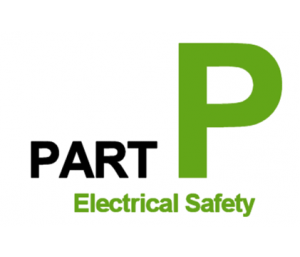Why use a registered electrician?
Simm Electrical Services recommends that you use an electrician registered with one of the government-approved schemes to do any electrical installation work that you need. Registered electricians work to the UK national safety standard (BS7671) and will provide you with a safety certificate to confirm their work has been designed, inspected and tested in line with that standard.
Alex is a proud member of NAPIT – one of the leading government-approved and United Kingdom Accreditation Service (UKAS) accredited membership scheme operators in building services.
What is NAPIT?
NAPIT is one of the government approved schemes operating in the UK for electrical installers. They are committed to high safety standards within the home. All NAPIT registered installers have to meet strict entry requirements and are regularly assessed to ensure their ongoing competence. By chosing a NAPIT registered tradeperson, you can have the confidence and peace of mind that comes with knowing that the installer working in your home is able to comply with the relevent building regulations and industry safety standards.
NAPIT registered installers are:
- Able to complete work safely and to legally required standards
- Regularly assessed to ensure their ongoing competence
- Capable of working to the very latest health and safety regulations
- Able to provide you with the certificates you may need should you come to sell or rent your home
What is Part P?
Electrical safety requirements for dwellings are set out in Part P of Schedule 1 of the building regulations. Part P states that anyone carrying out electrical installation work in a home must make sure that the work is designed and installed to protect people from fire and electrical shocks. Part P applies to any changes made to existing installations, including any parts that have been rewired. In April 2013 further changes were introduced, reducing the range of electrical installation work that is notifiable – removing some requirements in kitchens and outdoors.
If you would like to read the full Part P document it can be accessed by clicking here Part P Building Regs
RCD’s
An RCD, or residual current device, is a life-saving device which is designed to prevent you from getting a fatal electric shock if you touch something live, such as a bare wire. It can also provide some protection against electrical fires. RCDs offer a level of personal protection that ordinary fuses and circuit-breakers cannot provide. An RCD is a sensitive safety device that switches off electricity automatically if there is a fault. An RCD is designed to protect against the risks of electrocution and fire caused by earth faults. For example, if you cut through the cable when mowing the lawn and accidentally touched the exposed live wires or a faulty appliance overheats causing electric current to flow to earth.
For more information about RCD’s please see here
Why do earthing and bonding need to be checked for safety?
If you are having an alteration of addition made to your electrical installation, your electrician must check (as well as other things) that the earthing and bonding arrangements you have are up to the required standard.
This is because the safety of any new work you have done (however small) will depend on the earthing and bonding arrangements.
What is earthing?
If there is a fault in your electrical installation you could get an electric shock if you touch a live metal part. This is because the electricity may use your body as a path from the live part to the earth part.
Earthing is used to protect you from an electric shock. It does this by providing a path (a protective conductor) for a fault current to flow to earth. It also causes the protective device (either a circuit-breaker or fuse) to switch off the electric current to the circuit that has the fault.
For example, if a cooker has a fault, the fault current flows to earth through the protective (earthing) conductors. A protective device (fuse or circuit-breaker) in the consumer unit switches off the electrical supply to the cooker. The cooker is now safe from causing an electric shock to anyone who touches it.
What is bonding?
Bonding is used to reduce the risk of electric shocks to anyone who may touch two separate metal parts when there is a fault somewhere in the supply of electrical installation. By connecting bonding conductors between particular parts, it reduces the voltage there might have been.
The types of bonding generally used are main bonding and supplementary bonding.

